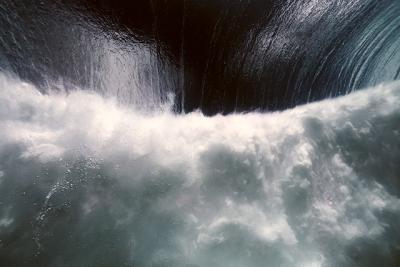Tripoli Gallery’s Colossal Collective Stretches Across Three Venues

After opening a second location for his Southampton-based Tripoli Gallery this year in East Hampton, Tripoli Patterson might have been expected to do a larger than usual version of his annual “Thanksgiving Collective.” But few could have foreseen just how large that vision would become.
Unable to contain himself in just the two spaces, the young but veteran art dealer took over the Southampton Arts Center as well for the 11th edition. His annual amalgam of artists he has shown or wants to show has grown to fit the trebling of wall space with a number of emerging and established artists either new or known to the gallery.
Mr. Patterson took a smart approach to the more than 100 works he has included, multiple pieces by 35 artists. Rather than concentrating the work of each artist in one venue, he chose to spread them out over the three sites to make more thematic installations in each. There is no exact science here. The only constant appears to be that no one artist made it into all three venues, which was probably wise politics.
The result is a show(s) that feels like an extended conversation. Each can stand on its own but is enriched by the other. The whole is a personal version of an annual, biennial, or triennial-style show, a category also selective in nature, but more wide-ranging. In this instance, it serves as a showcase of one person’s eclectic associations with the art world as it intersects with his world.
The Southampton Arts Center, just by its sheer size, carries the most depth, breadth, and volume. Most of the largest two-dimensional and three-dimensional pieces ended up there from sheer logistics. It also boasts a number of outdoor sculptures in the garden.
It might seem facile to some, but the Bruce High Quality Foundation’s plaster busts on circular plinths are an effective takedown of the historical fetishization of classical art. That several 19th-century casts of such busts stand in the garden east of the former Parrish (and with no irony) makes the Bruce’s statues perfect foils for their staid presence. The newer casts have been coated with bright white enamel paint andembellished with primary colors and appliqués, including cigarettes, a trademark of the group’s work.
Their placement near the gallery’s windows draws an effective parallel to the statuary outside. They are unapologetically kitschy, and their mere presence calls out the unintended but literal kitschiness of the replicas. It’s a fun little conversation, not meant to be too weighty, that still has a lot to say.
The works of a number of artists not traditionally tied to the gallery are on view across the three spaces. Ross Bleckner can now be added to the roster of artists of international repute who have shown work in conjunction with the Tripoli Gallery. Mary Heilmann, Billy Sullivan, Robert Harms, Mike Kelley, Dan Colen, and Ahn Duong are some of the surprising or boldface names added to Tripoli’s usual roster.
Yung Jake, Mr. Patterson’s brother, performed on opening night and contributed two sculptural pieces to the show. One is a Dumpster painted baby blue with decals of twisted Fiji bottles. Florescent lights placed inside give off an institutional glow, and a bit of spray paint depicts a smiley face and the word “Hi.” It is slick and rough at the same time, and kind of cute, for a Dumpster. His other piece in the show, on view in East Hampton, is more abstract and less visual. A rough piece of metal, abraded by rust pockmarks and faint lines, is enlivened by a Fiji sticker.
From Southampton to East Hampton, there’s no discernible divide between figuration and abstraction that might have historically delineated aesthetics. Judith Hudson’s watercolors are more suggestive in Southampton than they are explicit in East Hampton. Mr. Harms’s abstract work stayed in Southampton mostly because his two paintings have a preppie palette.
New to me were Benjamin Keating and Brendan Lynch, both of whom have work that plays with the sculptural and the two-dimensional in the arts center. Mr. Keating slashes the canvas of paintings and then casts them as sculptures along with their frames. Mr. Lynch attached drawings, paintings, and found objects to a chain-link fence in a way that is vaguely familiar yet still fresh and eye-catching.
Scott Covert has two powerful works, one canvas at the arts center and another in East Hampton. They consist primarily of tombstone rubbings that he silkscreens or paints or draws directly on canvas. In “Sports I,” at the arts center, he includes rubbings from Ty Cobb, Vince Lombardi, and a host of others in white and black mostly, but with some shots of purple and blue. Although the letters have meaning as names, he relates them visually to one another as well so that they form a full composition.
A related work in East Hampton, “Blue Blue 2,” appears to focus on names from the blues. It is hanging near a Bruce High Quality Foundation oil on canvas painting called “Massacre of the Innocents” with a similar color scheme that also uses words as part of the composition.
Two of Mr. Colen’s untitled works using paint to look like accumulated guano are placed across the street from each other in Southampton, as are two of Matthew Clark’s surf-inspired photographs. But Mr. Bleckner’s vaguely floral paintings, Keith Sonnier’s large-format drawings, and Ms. Duong’s realistic paintings are found at the art center and in East Hampton. It’s a complicated calculus with no discernible rationale, but in the end it works well for each of the venues. The work on display goes together, and no single site seems to be the worse for it.
So see one or see all, but it is worth checking out this year’s “Thanksgiving Collective.” It’s on view through Jan. 31.
